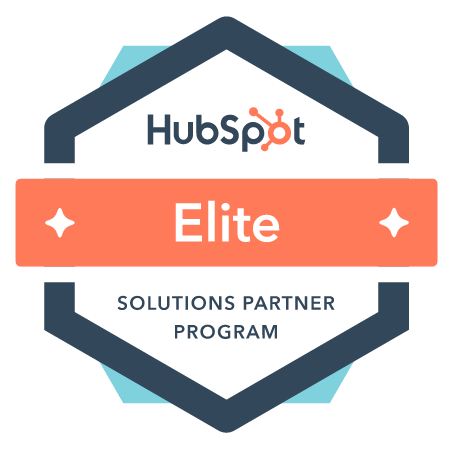
As two of the world’s top CRM systems, HubSpot and Salesforce have become vital sales and marketing tools to companies across the globe. They’re great on their own, but together they open the door to streamlined connection for sales and marketing alignment. This connection enables a data-driven marketing strategy with closed-loop analysis, letting you know where your most qualified leads are coming from, how they’re closing, and where to get more! Here are a few things you need to know in order to maximize the benefits of your Salesforce-HubSpot integration.
Objects: Contacts, Leads, Deals, Accounts, Companies
Before you can achieve marketing-sales alignment, it’s important to understand how objects translate between systems. When a contact is first created in HubSpot, from either an import or online conversion, the contact is already in its “final form,” meaning that HubSpot contacts are just contacts. When a contact progresses though the sales and marketing funnel, its lifecycle stage updates automatically based on pre-defined triggers. While you can customize these stages, the default lifecycle stages in HubSpot included the following: contact, subscriber, marketing qualified lead (MQL), sales qualified lead (SQL), opportunity, customer, evangelist, and other.
In Salesforce, new contacts are called leads. Once a salesperson engages with a lead and finds them qualified, the lead is converted into a contact and usually associated with an opportunity.
Standard mapping used between HubSpot and Salesforce is to have a new contact in HubSpot become a lead in Salesforce. Once an opportunity is won in Salesforce, the HubSpot lifecycle stage is updated, and the lead becomes a contact in Salesforce.
Standard Object Mapping:
HubSpot Property Salesforce Object
Contact Lead/Contact
Company Account
Deal Opportunity
Pipeline Clarity
The Salesforce pipeline is a valuable tool used by the sales team to move qualified leads through the sales cycle. By syncing the sales pipeline with HubSpot, the marketing team can receive valuable information about what happens to a lead in the sales process. Access to the pipeline will help the marketing team ensure they are only sending the sales team the most qualified leads and help realign what a qualified lead looks like for both teams.
Streamlined Lead Sharing Process
Using HubSpot features like scoring and inclusion lists, the marketing team can ensure the sales team is provided with the best quality leads as well as streamline the hand-off process by automatically assigning a contact to a salesperson when a certain criterion is met.
Automated Lead Scoring
HubSpot’s lead scoring is a handy feature that allows the marketing team to assign point values to desired marketing activities, such as downloading an ebook, clicking a link in an email, or simply visiting the website. By assigning point values to each action, a contact’s score will increase as they engage with the marketing materials and webpages. Once a contact reaches a predetermined score, they can be assigned a new lifecycle stage and be qualified for handoff to the sales team. When HubSpot and Salesforce are integrated, the sales team within Salesforce will have access to the lead’s score and marketing activities, further aiding the sales team in providing the best engagement with new leads.
Shortened Sales Cycle
Sales cycles have increased over time and can take longer when the leads are not ideal for the sales team. A Salesforce and HubSpot integration helps reduce the time spent qualifying leads and can shorten the sales cycle through an automated qualification process and lead nurturing through targeted marketing campaigns.
Retargeting Campaigns
It is common for a contact to become inactive after a while, but that does not always mean they won’t become engaged again down the road. Integrating Salesforce and HubSpot can help reactivate engagement with “dormant” contacts through retargeting campaigns. Similarly, contacts that have gone through the sales cycle but failed to close a deal can be added into a separate nurturing campaign to maintain communication. Integration ensures that contacts are not lost between the marketing and sales teams after handing them off.
Example Workflow
By using workflows to help qualify leads, here is an example of how a contact can progress through the marketing and sales funnel with a HubSpot-Salesforce integration.
- A visitor arrives on your website’s blog. The visitor likes the content and decides to subscribe to the blog through the email sign-up form. This is the visitor’s first conversion recorded in HubSpot, so their lifecycle stage is set to “subscriber.” A new contact record is created for the visitor in HubSpot and then synced to Salesforce as a lead.
- A couple days go by and the visitor returns to your website through a link in an email they received from you. The visitor finds a piece of downloadable content and fills out a form to access it. Since this is the visitor’s second conversion, their HubSpot score increases and qualifies them as a marketing qualified lead (MQL). Their lifecycle stage is updated automatically to represent their new MQL stage.
- After viewing more blog posts and downloading more content, the visitor’s HubSpot score increases to qualify them as a sales qualified lead (SQL). Their lifecycle stage updates accordingly, and an email notification is sent to a salesperson to make contact with the lead.
- The salesperson is now able to view the lead list in Salesforce and reviews all of the lead’s HubSpot contact information and activity. The salesperson attempts to make contact with the lead and logs the attempt in Salesforce.
- The salesperson connects with the lead and qualifies them as a contact. They convert the lead to a contact and create an opportunity to associate with the contact in Salesforce. Within HubSpot, the lifecycle stage is updated to “opportunity.”
- Finally, a sale is made, and the salesperson changes the contact’s status to Closed/Won. In HubSpot, the contact’s lifecycle stage becomes “customer.”
Setting up workflows within HubSpot creates many opportunities to set up unique triggers to qualify contacts before they are synced to Salesforce. This saves the sales team time and energy qualifying leads themselves.
Get Started
When HubSpot and Salesforce come together, there are endless opportunities to enhance your marketing and sales efforts. For more information about how to approach the Salesforce-HubSpot integration setup, read the first post in our series and subscribe to our blog for ongoing marketing updates!



